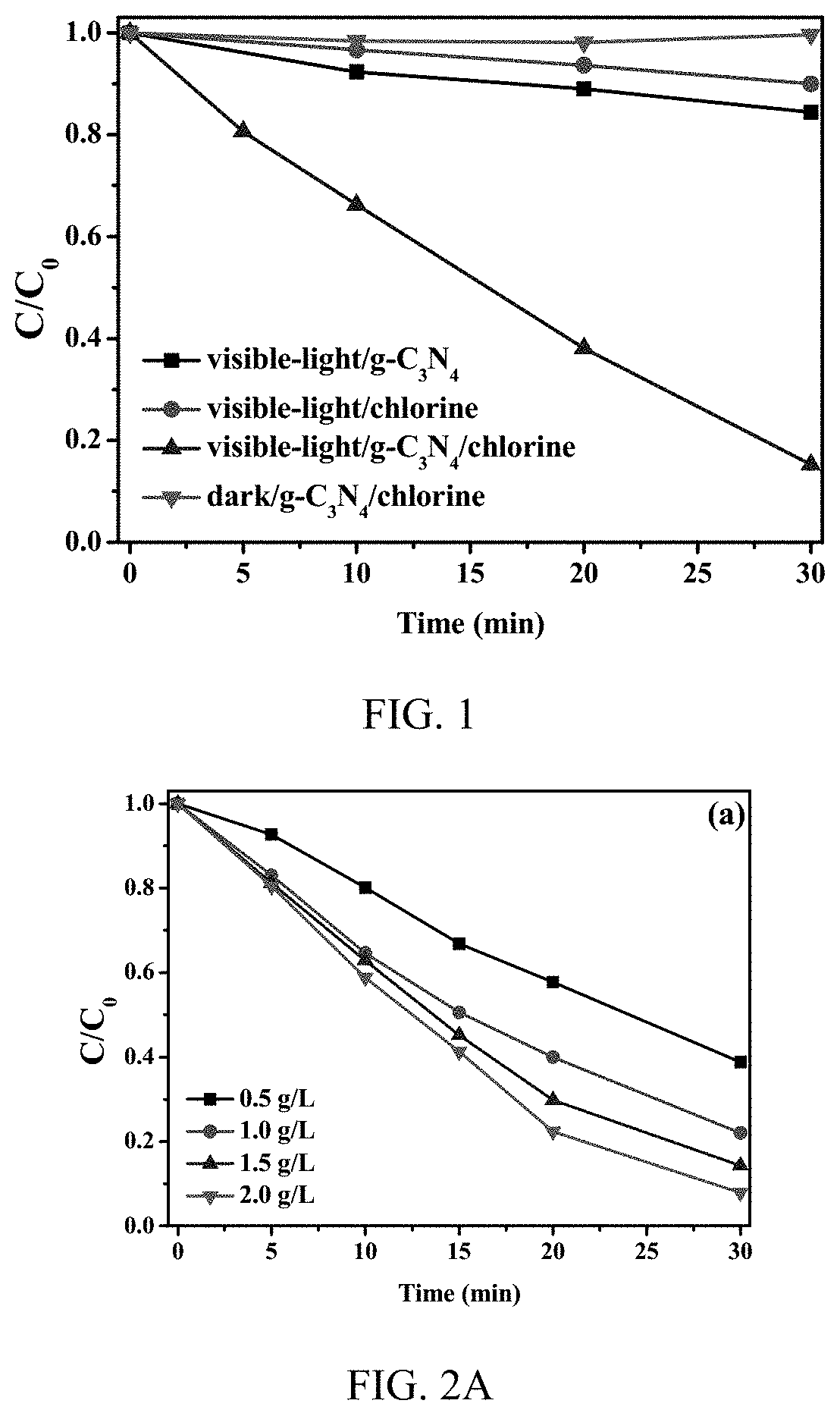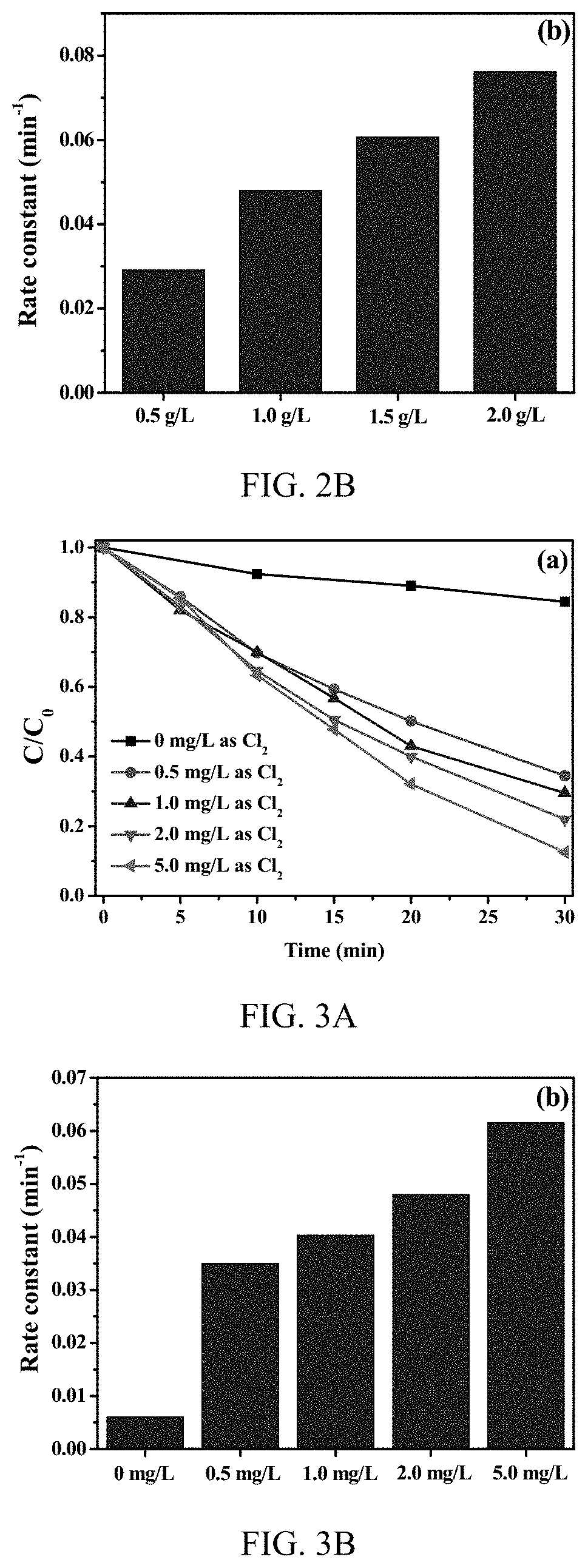Production of reactive oxidative species by photocatalytic activation of chlorine (i) under ultraviolet/visible light/near infrared irradiation
a technology of photocatalytic activation and reactive oxidative species, which is applied in the direction of oxidation, water/sewage treatment, and separation processes, etc., can solve the problems of unrecognized process, reactive oxidative species from free chlorine activation by less energy-intensive ultraviolet light, and energy-intensive uv irradiation
- Summary
- Abstract
- Description
- Claims
- Application Information
AI Technical Summary
Benefits of technology
Problems solved by technology
Method used
Image
Examples
Embodiment Construction
[0019]An embodiment of the invention is directed to the formation of reactive oxidative species by an AOP using photocatalysts that are activated by UV, visible and near infrared light. Various types of lamps, LEDs or sunlight can be used as the light source, where a suitable irradiation induces a photocatalyst to generate photoinduced species that activate chlorine. The activation of chlorine by this process can form various reactive oxidative species. The process activates chlorine using electrons, holes, and superoxide radicals that are generated after photocatalysts are activated by either UV or visible light or infrared. This activation produces larger amount of reactive oxidative species than the direct photolysis of chlorine under UV light and enables the activation of chlorine to form radicals by visible light or infrared radiation. The photocatalytic process forms a significant amount of electrons, holes, and superoxide radicals upon light irradiation using, singularly, or ...
PUM
| Property | Measurement | Unit |
|---|---|---|
| electromagnetic | aaaaa | aaaaa |
| second-order reaction rate constant | aaaaa | aaaaa |
| electromagnetic radiation | aaaaa | aaaaa |
Abstract
Description
Claims
Application Information
 Login to View More
Login to View More - R&D
- Intellectual Property
- Life Sciences
- Materials
- Tech Scout
- Unparalleled Data Quality
- Higher Quality Content
- 60% Fewer Hallucinations
Browse by: Latest US Patents, China's latest patents, Technical Efficacy Thesaurus, Application Domain, Technology Topic, Popular Technical Reports.
© 2025 PatSnap. All rights reserved.Legal|Privacy policy|Modern Slavery Act Transparency Statement|Sitemap|About US| Contact US: help@patsnap.com



